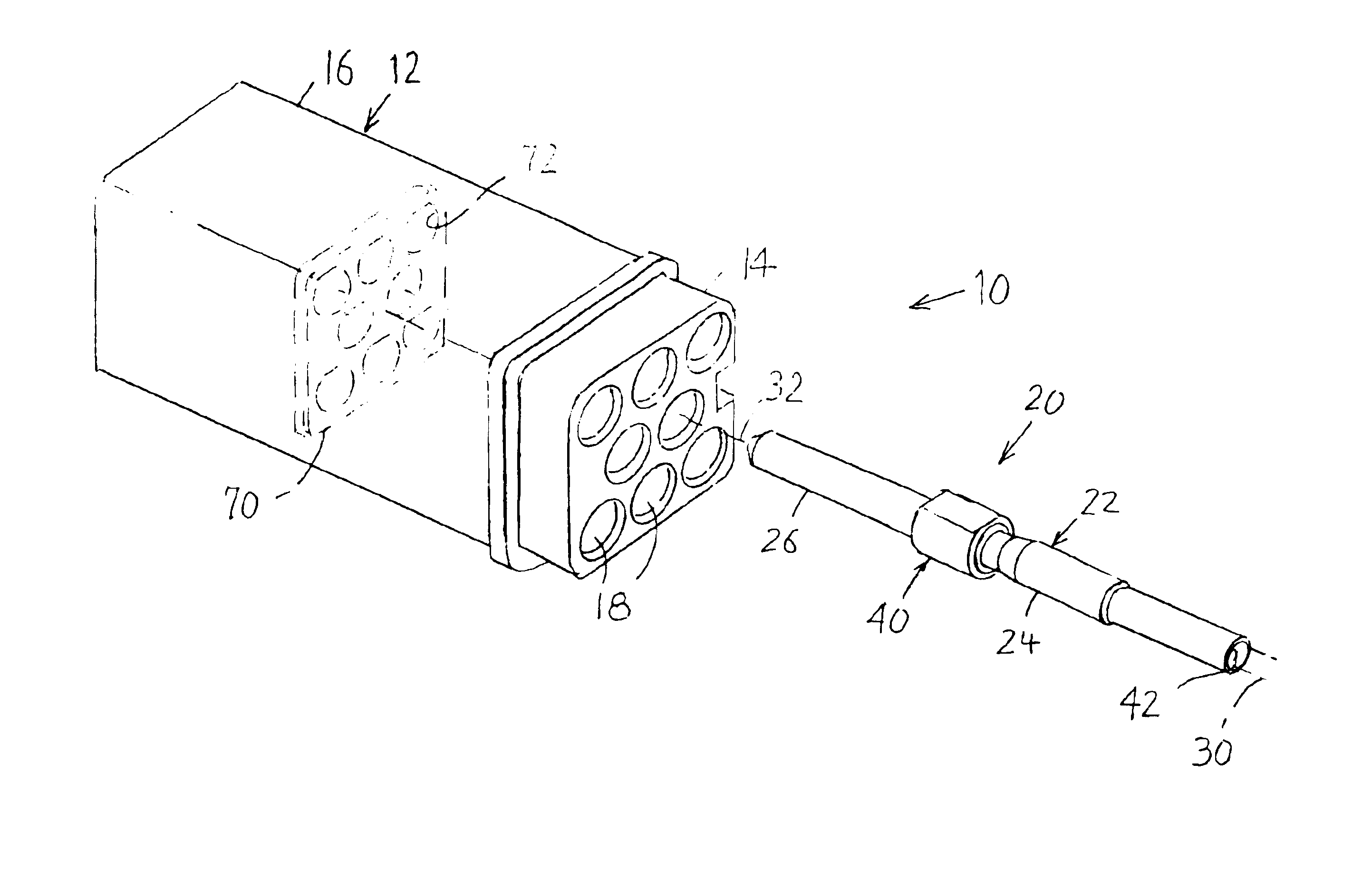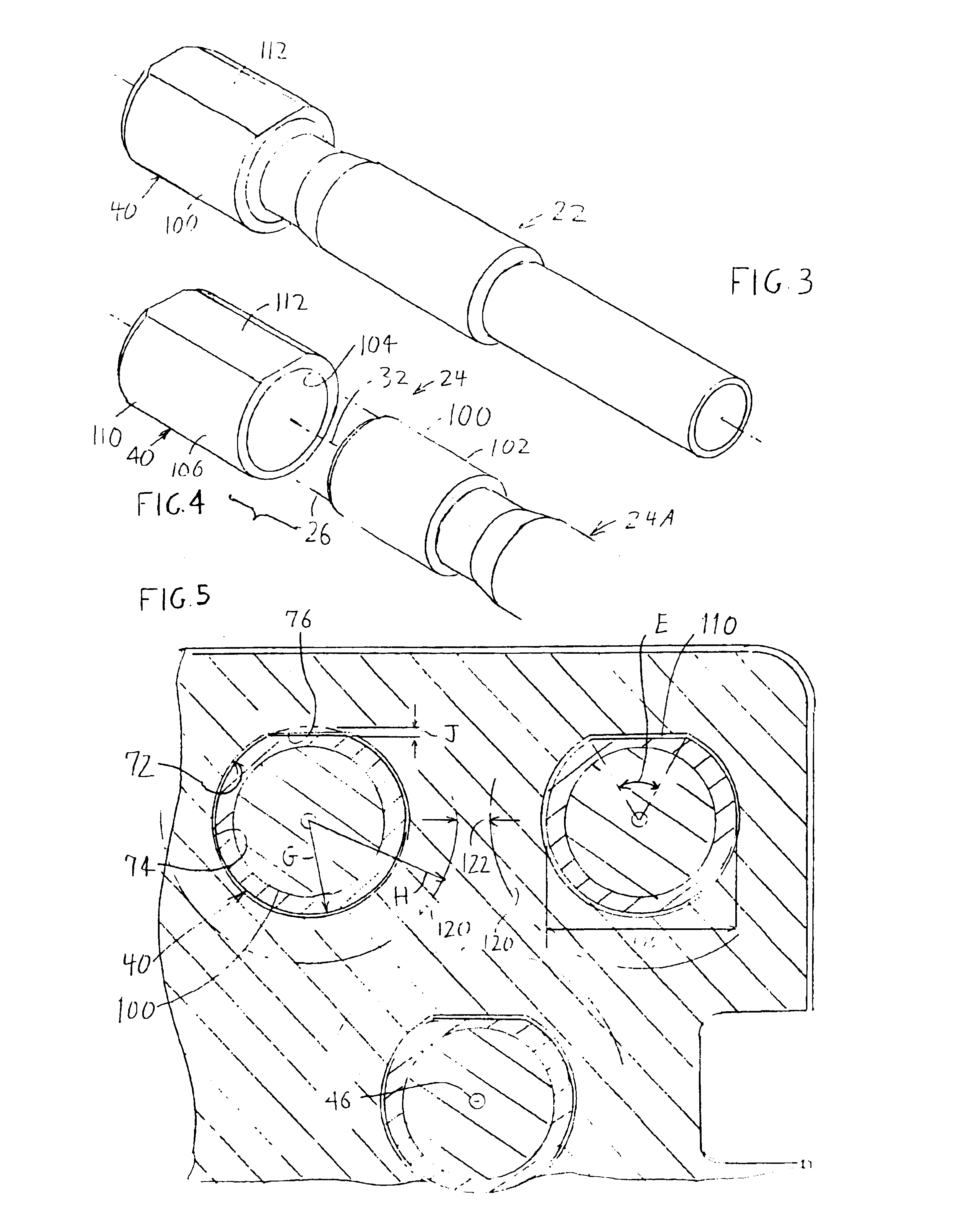Optical terminus keying
- Summary
- Abstract
- Description
- Claims
- Application Information
AI Technical Summary
Benefits of technology
Problems solved by technology
Method used
Image
Examples
Embodiment Construction
[0012]FIG. 1 illustrates an optical fiber connector 10 of the present invention, which includes a housing 12 with inner and outer housing parts 14, 16. The housing forms terminus-receiving passages 18 with portions in each housing part. An optical fiber terminus assembly 20 can be installed in any one of the passages. The assembly 20 includes a terminus 22 with a body 24 and a ferrule 26, and a stripped front end of an optic fiber cable indicated in phantom lines at 30. The connector also includes an index sleeve 40 which is mounted on a front portion of the terminus body 24, and which determines the rotational position of the terminus assembly 20 about its axis 32.
[0013]FIG. 2 shows two terminus assemblies 20A, 20B, with assembly 20A being shown in section and assembly 20B being shown in side elevation. The terminus 22 of the assembly 20A has a bore 42 that receives the stripped front portion 44 of the cable 30. The entire cable includes an outer jacket and a strength member within...
PUM
 Login to View More
Login to View More Abstract
Description
Claims
Application Information
 Login to View More
Login to View More - R&D
- Intellectual Property
- Life Sciences
- Materials
- Tech Scout
- Unparalleled Data Quality
- Higher Quality Content
- 60% Fewer Hallucinations
Browse by: Latest US Patents, China's latest patents, Technical Efficacy Thesaurus, Application Domain, Technology Topic, Popular Technical Reports.
© 2025 PatSnap. All rights reserved.Legal|Privacy policy|Modern Slavery Act Transparency Statement|Sitemap|About US| Contact US: help@patsnap.com



